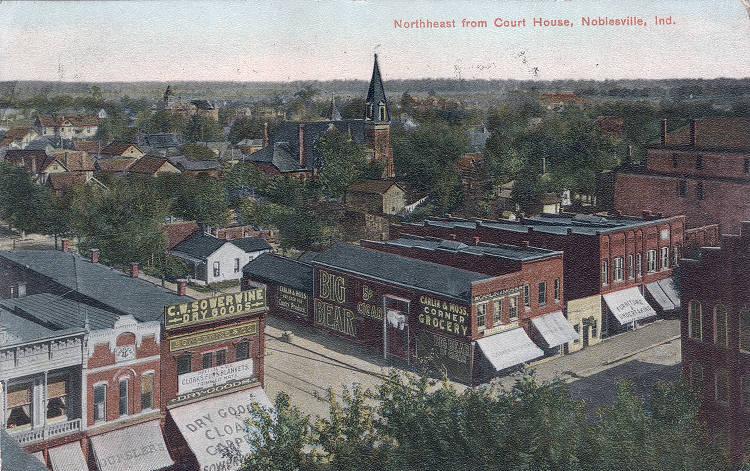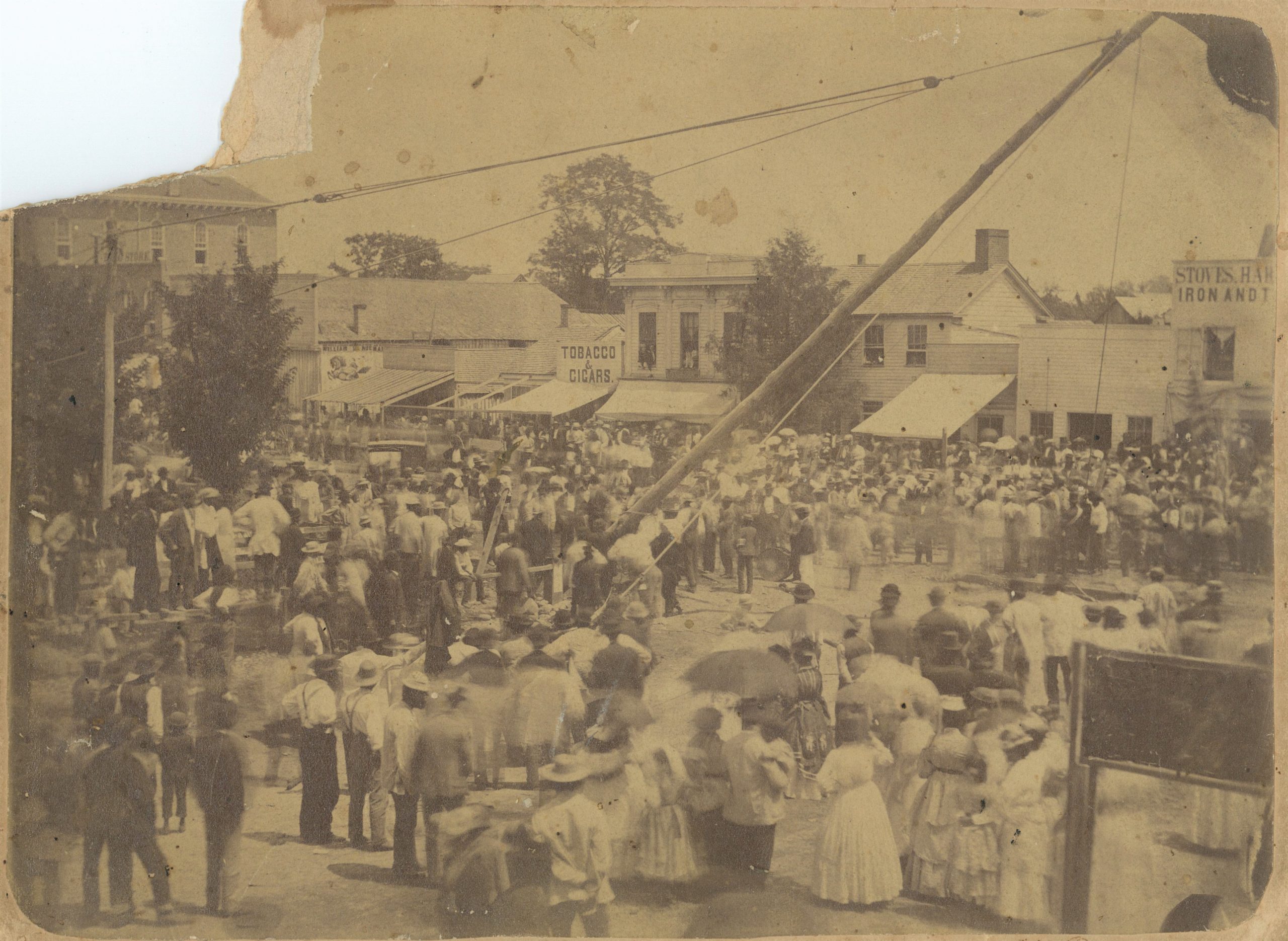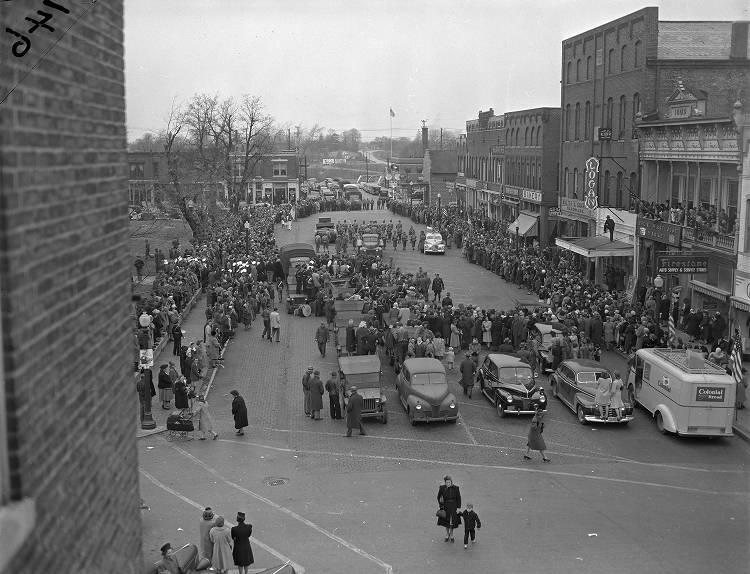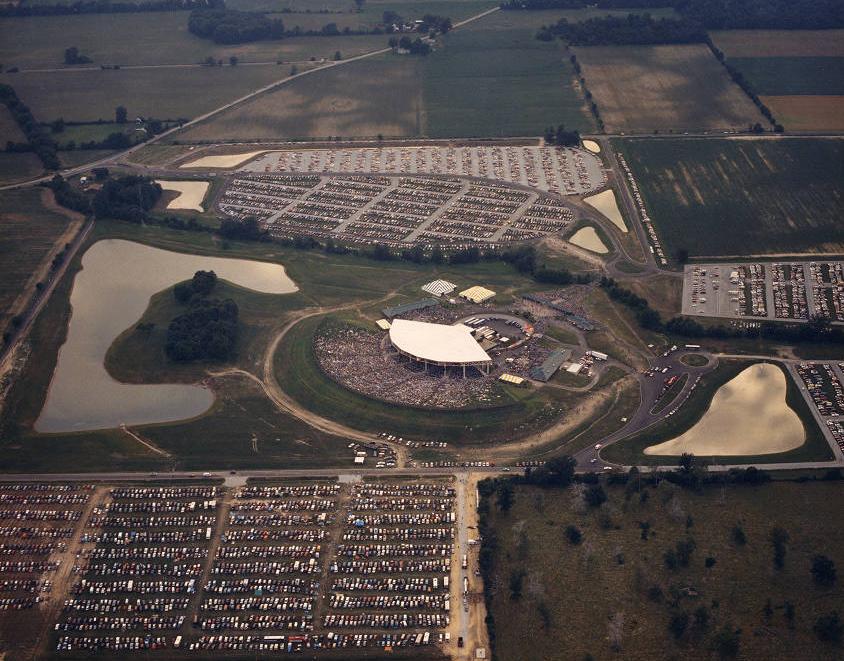Noblesville is the county seat of . It is located 27 miles north of Monument Circle in Indianapolis.

The town was platted by and Josiah Polk in January 1823 and was probably named for James Noble, the first U.S. senator from Indiana. It officially became the county seat in 1824. The first session of the Hamilton County Circuit Courts took place in Connor’s home. The plat of the original town included 26 squares and 75 acres of land along the east bank of the .
Noblesville was incorporated as a town in 1851, the same year that the Indianapolis and Peru Railroad arrived. At the time, the population of Noblesville stood at less than 1,000 people. With rail access, Noblesville became a grain center for the rich agricultural region that surrounded it. In 1854, the Evans Brothers erected the first flour mill in the city. Warehouses also sprang up in the area.
By 1869, there were eight dry goods stores, six millinery shops, one clothing store, four tailor shops, six groceries, two restaurants, two bakers/confectioners, one bookstore, four drug stores, two harness shops, three boot and shoe shops, three meat markets, one feed store, two tin shops, one tin and stove store, one banker/broker (no bank), and two hotels. There also were liveries, blacksmiths, barbers, and people in the building trades, and over a dozen attorneys, six doctors, and one dentist practiced in the community. This commercial development outpaced industrial development. By this time, Noblesville had two flour mills, one woolen factory, one planing mill, two wagon manufacturers, and a brewery. Two early surviving commercial buildings from this era, dating from the 1860s, are located at 817 and 819 Conner Street.
The Hamilton County Courthouse is the third to be constructed on Courthouse Square. It replaced the simple three-story brick structure that had served as the courthouse beginning in 1838. Designed by local architect , who also was the architect for the Indiana , the courthouse built between 1877 and 1879 was considered one of the finest in Indiana. It cost nearly $150,000 to complete. The new courthouse sparked development on the square and streets surrounding it. Many of the commercial buildings were remodeled with cast-iron storefronts, brick facades, and plate-glass windows.

In 1887, at the start of the natural gas boom in Indiana, Noblesville became a city. It experienced significant growth at this time with factories such as the American Strawboard Company in 1890 and the Model Milling Company in 1892. The demand for workers caused the growth of neighborhoods such as “Johnstown” in the southwestern part of the city. Population more than doubled from 2,221 in 1880 to 4,792 in 1900.
The gas failed around 1900 and, like the county in general, the city dealt with a population drop and economic stagnation during the early part of the 20th century. This period also saw the rise and fall of the . Noblesville had a KKK chapter that staged a parade and cross-burning on the courthouse square in 1923. However, when the rape and murder trial was conducted in 1925, Noblesville was chosen as a change of venue. A Hamilton County jury found Stephenson guilty.

The first major city park, Forest Park, was created in 1927 and, in 1931, the public pool was opened. Two important factories opened in the city in the 1930’s—Noblesville Casting Company, in 1935, and Firestone Industrial Products, in 1936. However, the growth was limited until after World War II, when suburban booms began in Hamilton County. Riverview Hospital opened in 1951 and eventually became one of the major employers in the city.
Noblesville was a racially segregated city until the mid-20th century. City officials excluded Black residents from the municipal pool at Forest Park when it opened in 1931. The battle to end segregation at the pool began in summer 1953. Although there is no known record of the city ever making a declaration to integrate the pool, it became available to all residents in the late 1950s or early 1960s.
In 1968, Noblesville created a Human Rights Commission to deal with race and other issues. It was sometimes referred to as the Civil Rights Commission and the Human Relations Commission. That same year, Murphy White, an African American civic leader, was elected to the City Council. Noblesville abandoned its Human Rights Commission sometime after 1985. The city formed Noblesville Diversity Coalition to revive its efforts to address racial issues in 2018.
During the last decade of the 20th century, there was a focus on cultural development. The Noblesville Preservation Alliance was formed in 1987 and organized the movement of the William Houston Craig House in 1988, as well as an annual Historic Home Tour. The Craig House, built in 1893, was placed on the National Register of Historic Places in 1990.
Noblesville Main Street was created that same year for the preservation and development of the Courthouse Square. The listing of the Noblesville Commercial Historic District on the National Register of Historic Places followed in 1991. Noblesville Main Street also started an annual Street Dance in 1991 and a Farmer’s Market in 1992.
Although the city boundaries changed, they remained within Noblesville Township for most of its existence. The population of Noblesville Township was always the largest in the county until 1970 when Clay Township passed it with the enormous growth of . In 1986, the city council annexed land below 146th Street that was a part of Delaware Township. The Hamilton County Government and Judicial Center Expansion opened in 1992.

was built in 1989 in Hamilton County’s Wayne Township, but it was not until 1998 that the city began annexing land there. It later began annexing land in Fall Creek Township, which extended the city’s borders to the eastern county line along the Highway 69 corridor. In 2007 the area saw the creation of the Noblesville Corporate Campus and Hamilton Town Center mall at the intersection of Campus Parkway and Highway 69.
Mayor Mary Sue Rowland created the Noblesville Cultural Arts Commission in 1993. The NCAC produces Noblesville Shakespeare in the Park, which is the second-longest continuously running production in the state. The Nickel Plate Arts campus was established in 2012 as an arts incubator. The city created the Noblesville Arts Council in 2013 and established a Cultural Arts District in 2016. The City Parks Department opened the First Merchants Amphitheater at Federal Hill Commons in 2017, which is home to Shakespeare in the Park and the Farmer’s Market.
In 2018, the , located in Forest Park starting in 1960, left Noblesville for Logansport, Indiana, after issues about mismanagement and safety surfaced. Its departure allowed city to convert the railway line used for excursions into the Nickel Plate Trail, a 9.2-mile pedestrian trail running from 96th Street in to Pleasant Street in Noblesville.
Downtown Noblesville has been slow to pursue new development because of its historic character. By 2020, several new projects were underway, including new mixed-use developments, the first new apartments constructed in over 100 years, a parking garage, and the transformation of a mall where a store closed.

Is this your community?
Do you have photos or stories?
Contribute to this page by emailing us your suggestions.

